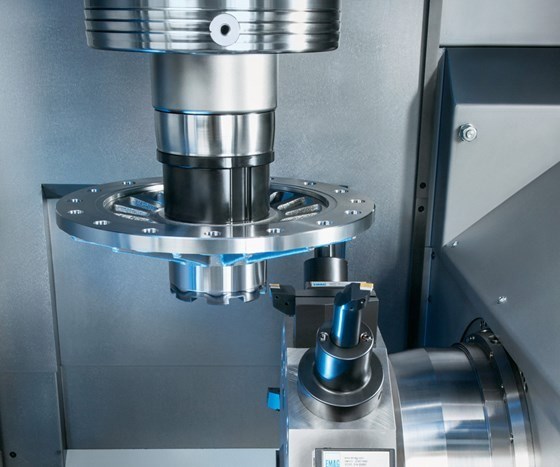Programming Self-Loading Vertical Turning Centers
This article looks at some programming considerations for a self-loading VTC to help get the most efficient production from these machine tools.

Multitasking capability on inverted vertical turning centers increasingly demand optimized programming techniques to get the most from these flexible machine tools.
I remember seeing my first self-loading vertical turning center (VTC) at IMTS in the early 1980s. I thought then, and still do, that this configuration, employing the machine’s main spindle as a load/unload device, made all kinds of sense.
Looking out over the metalworking world at the number of iterations of this concept that exist in the market today, the idea had and still has legs for many applications. The flexibility of the concept has been further refined over the years with the addition of other metalworking operational capabilities to the single machine platform.
Today, these machines deliver true multitasking capability to shops looking to complete a workpiece in a single handling. Milling, grinding and laser cutting join the machine’s main purpose of turning, putting these operations at the shop’s fingertips.
As the ability increases to accurately process complex workpieces, the need for programming tools to optimize and harmonize the production process arises. The article, “Considerations for Inverted Vertical Turning,” looks at some programming considerations for a self-loading VTC to help get the most efficient production from these machine tools.
Related Content
-
Automation Breakthroughs Revolutionize Precision Machining for Complex Parts
Marubeni Citizen-Cincom delivers custom solutions to address some of the biggest challenges in precision machining from handling small parts, to robot integration and unique tooling needs.
-
6 Tips for Training on a Swiss-Type Lathe
There are nuances to training a person to effectively operate a Swiss-type lathe. A shop I visited a while back offers some suggestions.
-
Shop Optimizes its Swiss-Turning Flexibility
Paramount Machine uses various Swiss-type lathes, some with a B axis, to produce parts more effectively than it did on conventional chucker lathes. Today, nearly every job under 1.5 inches in diameter runs across those machines even if the batch size is a mere 5 pieces.






.jpg;maxWidth=300;quality=90)





